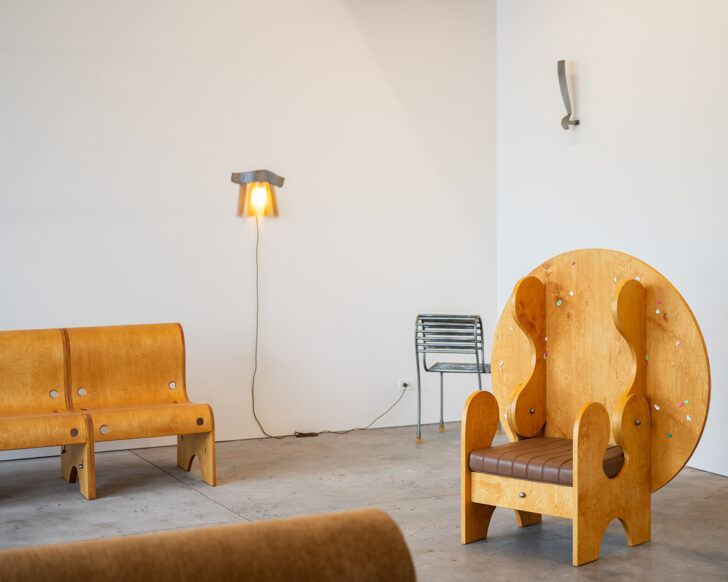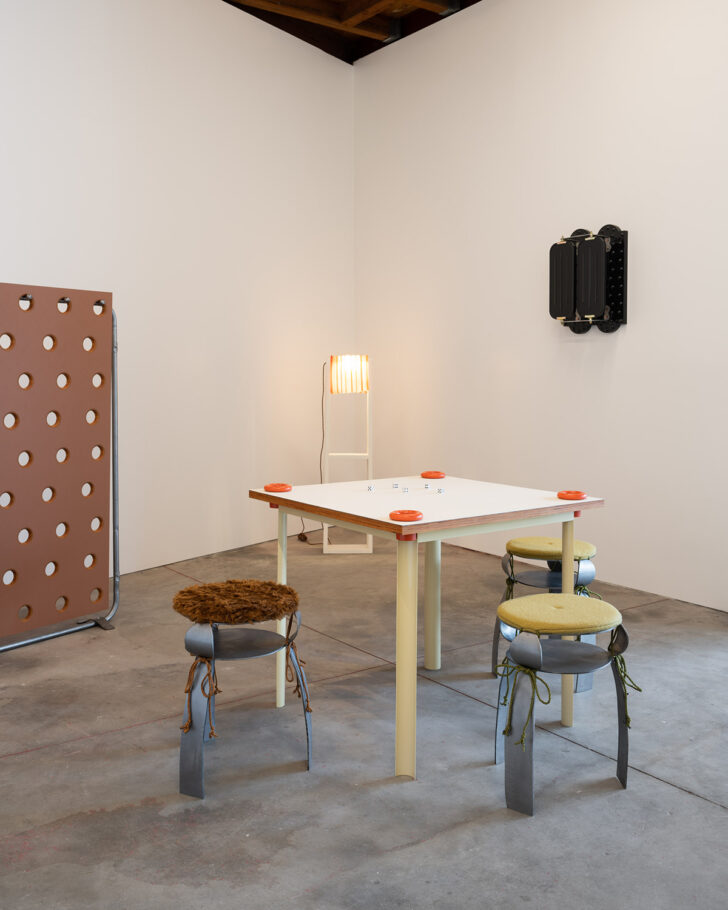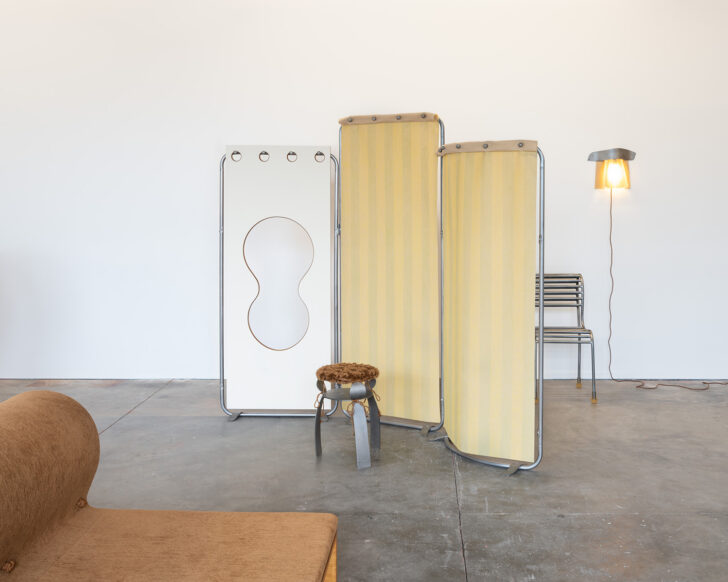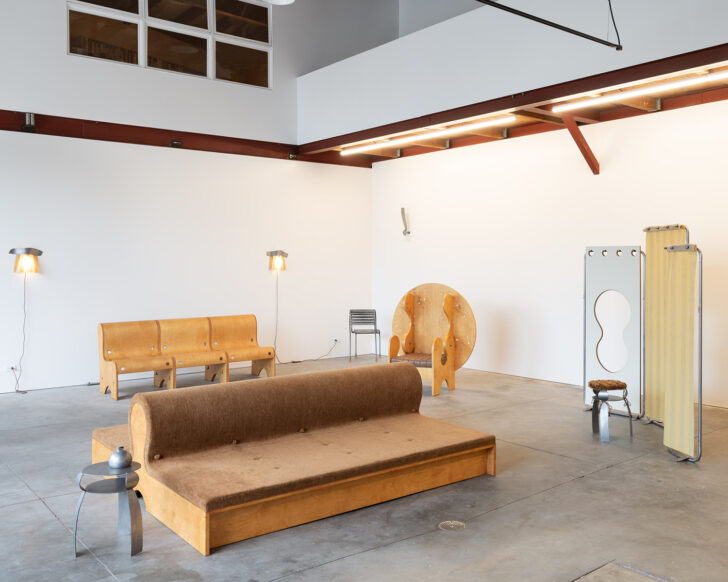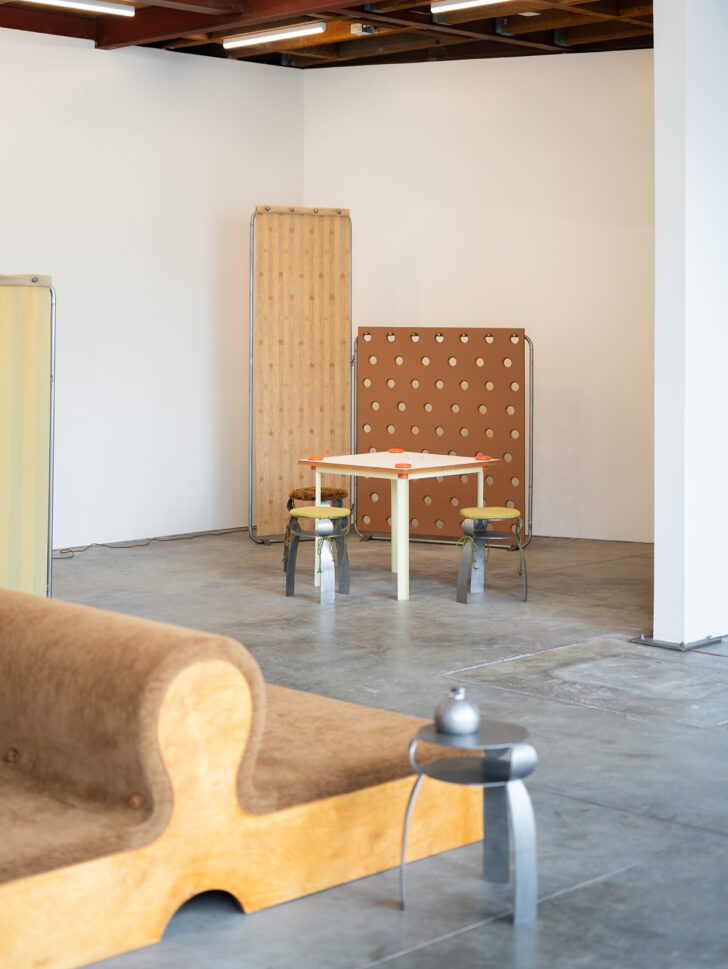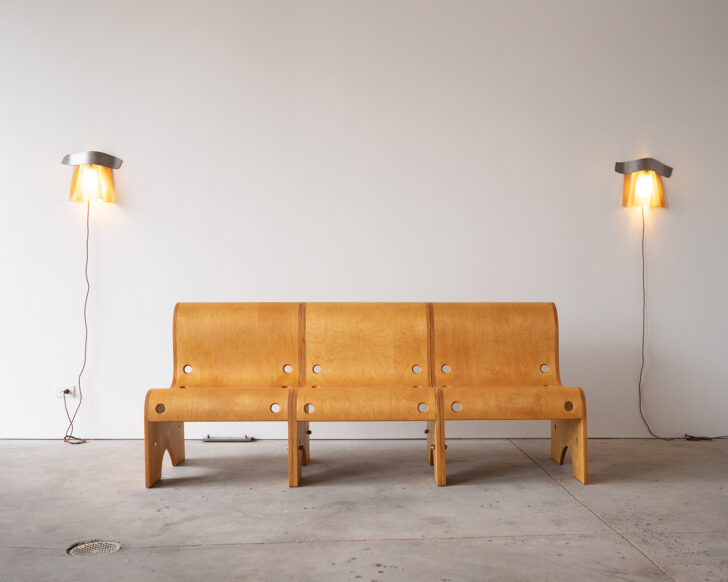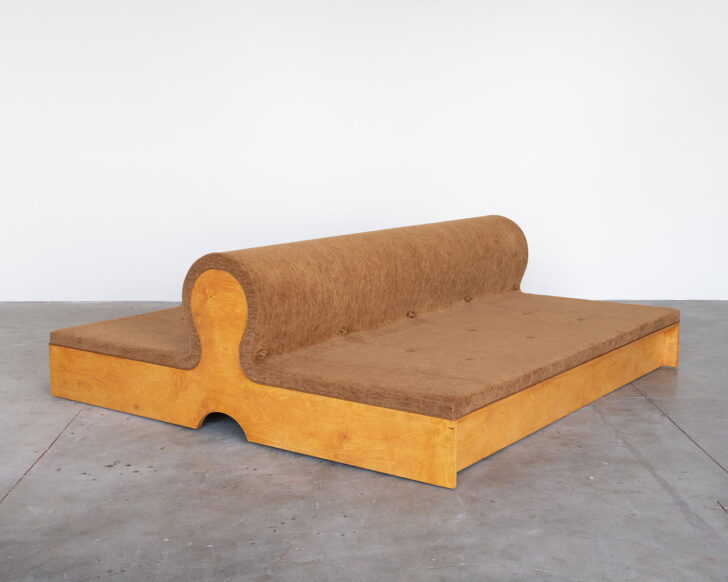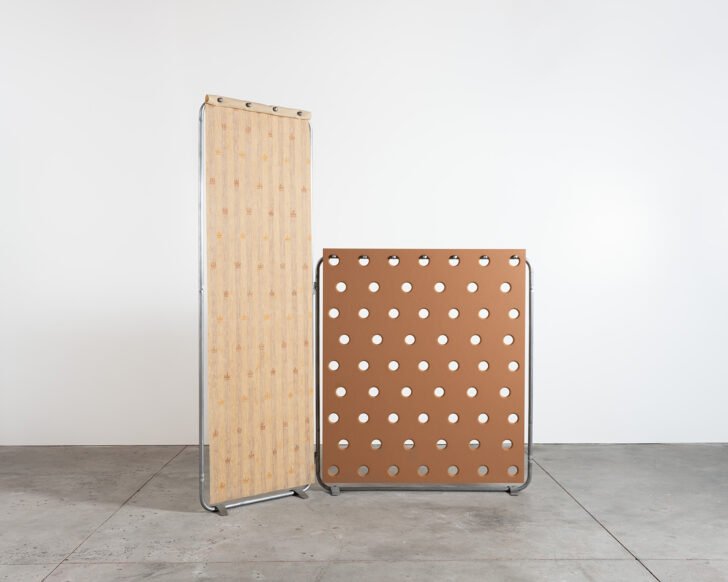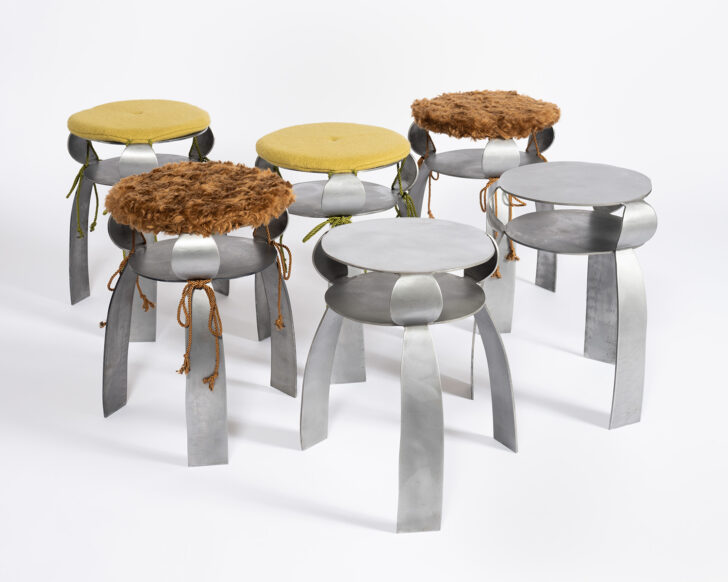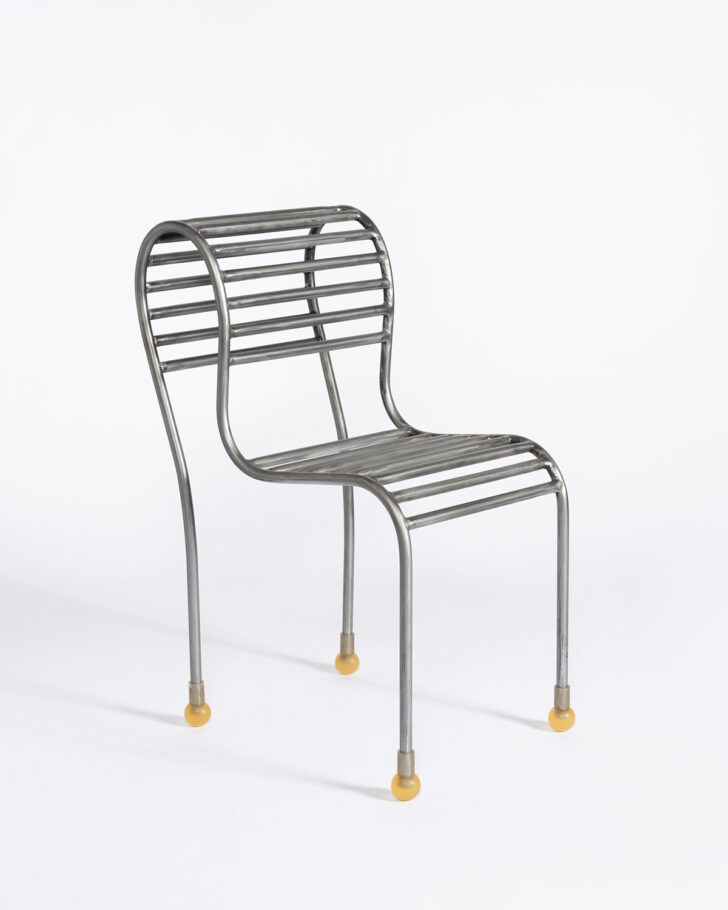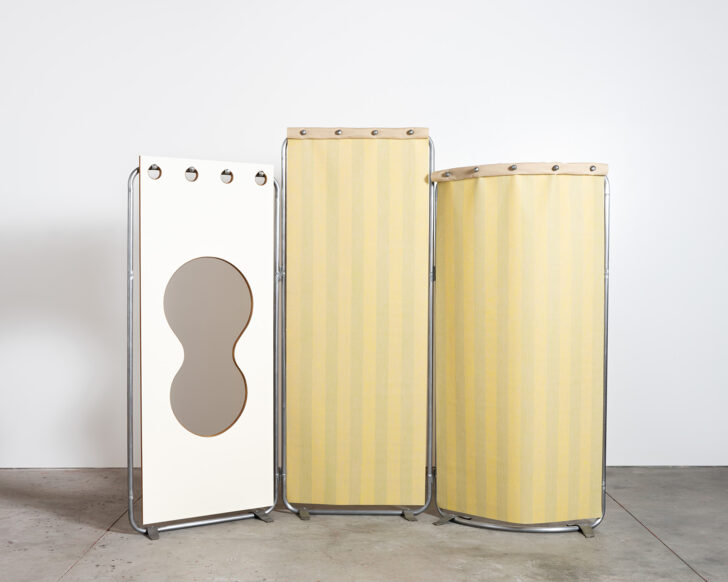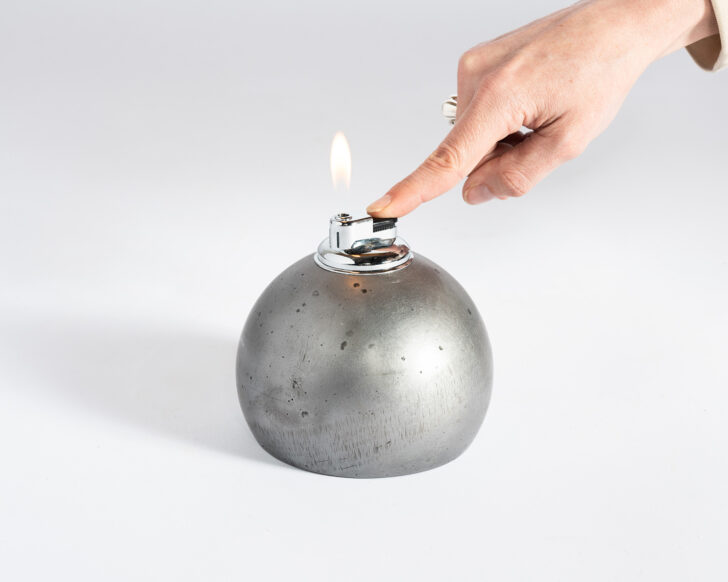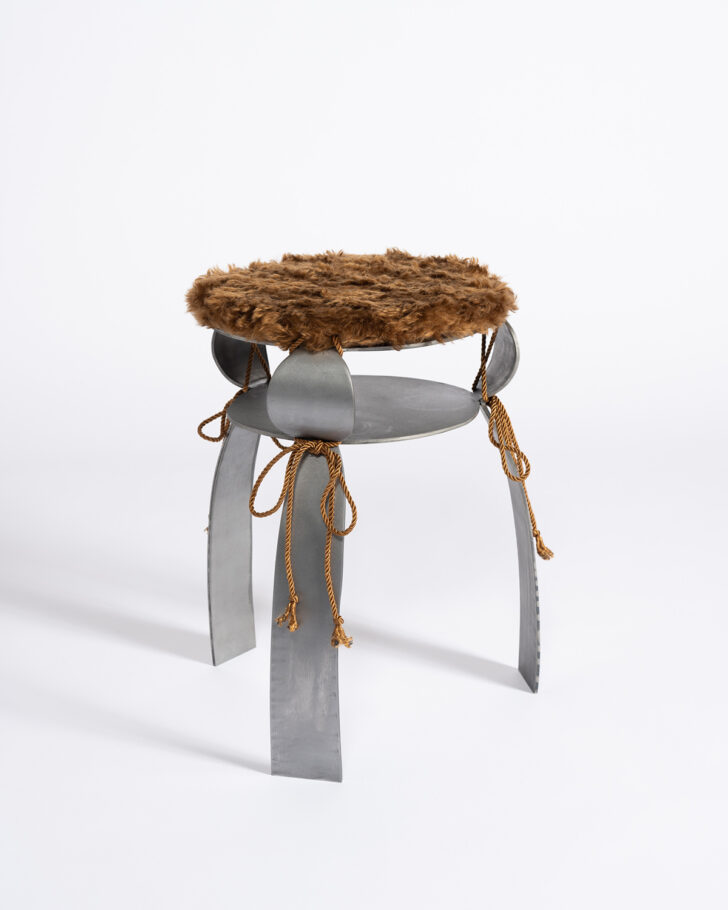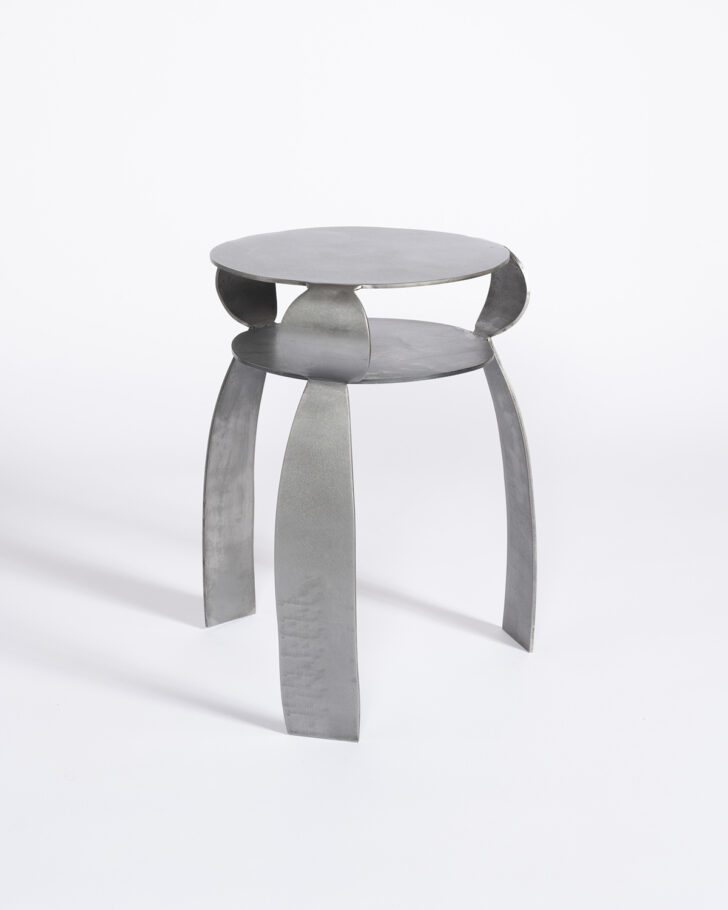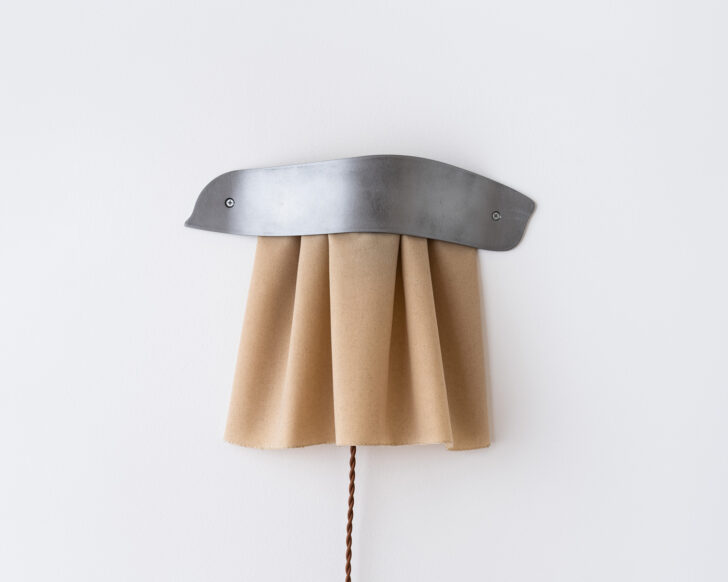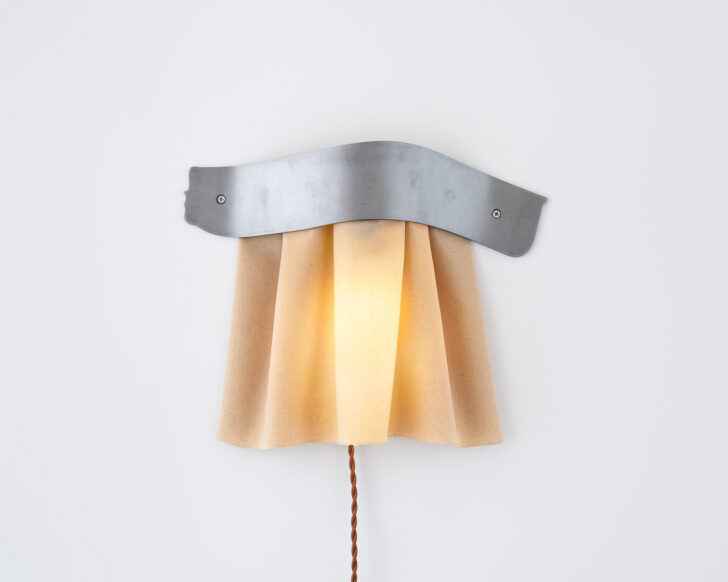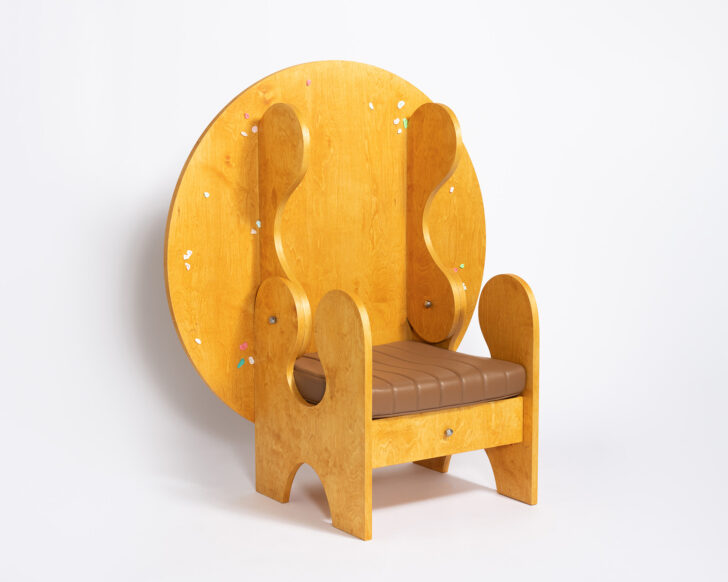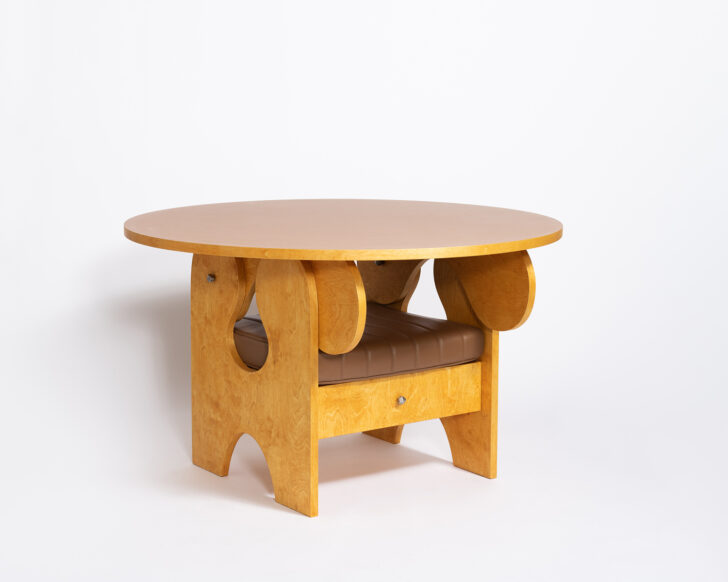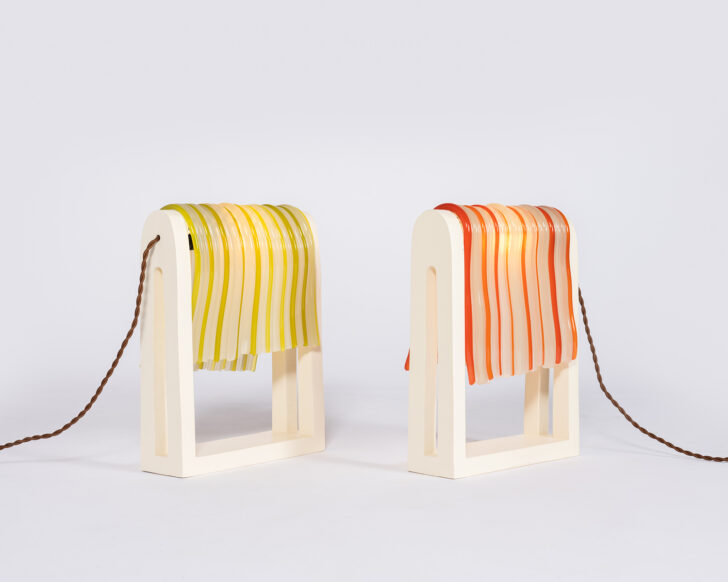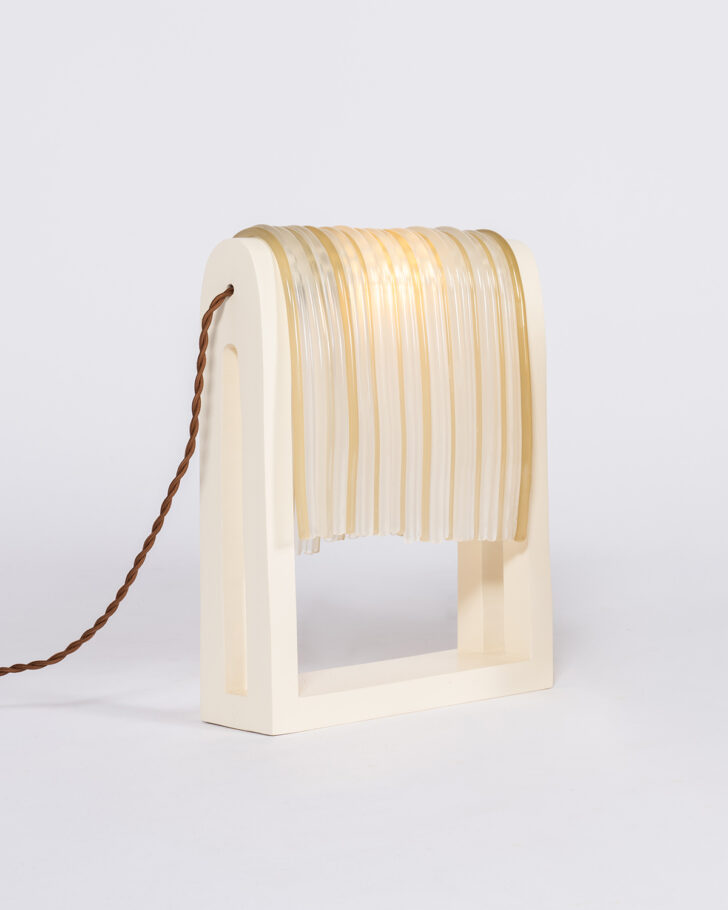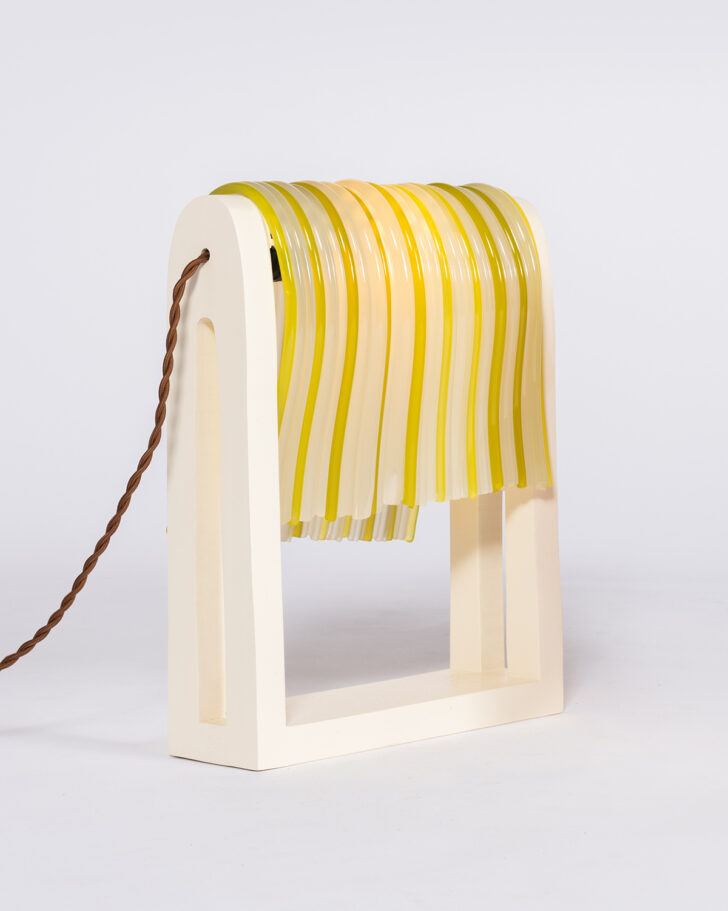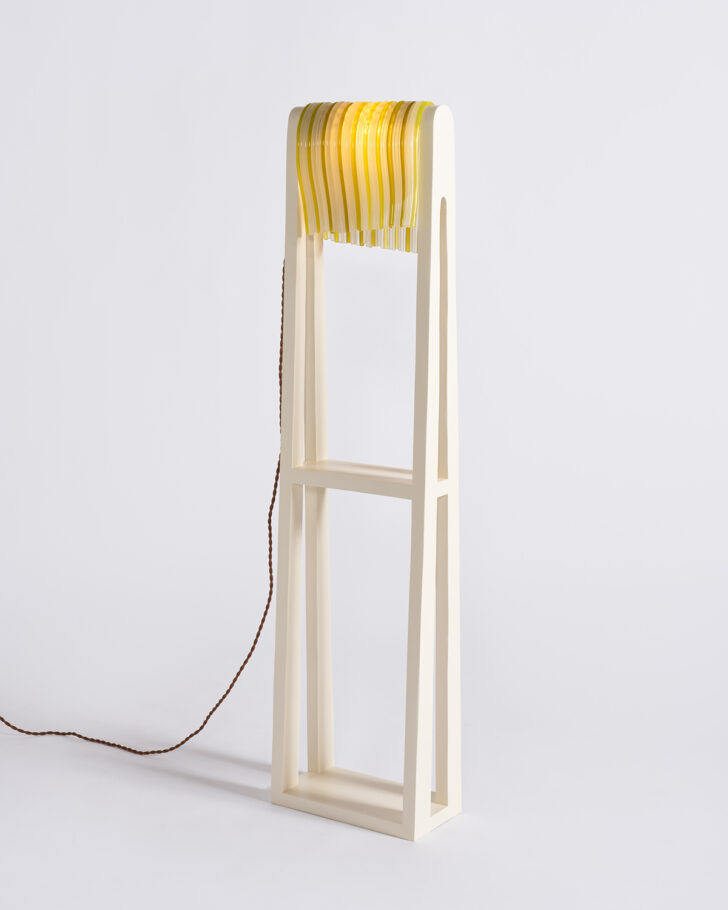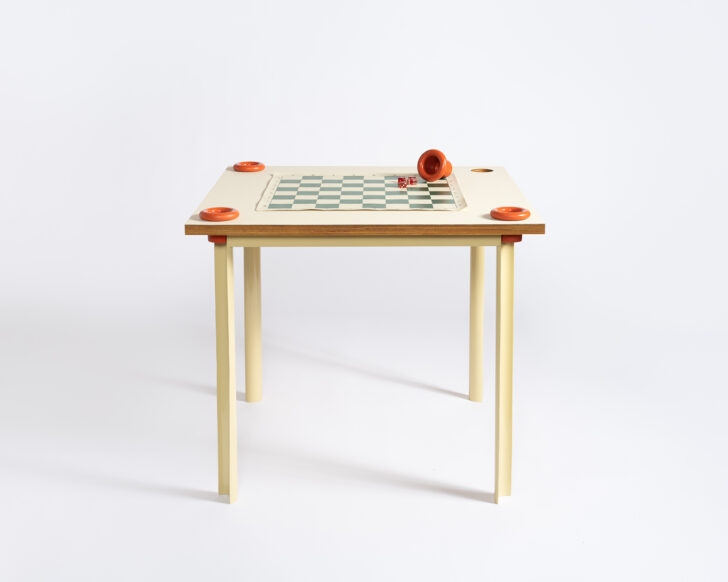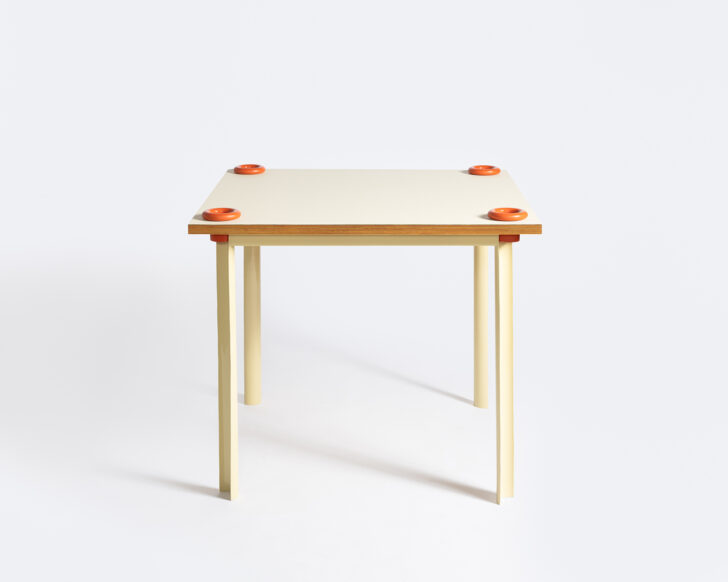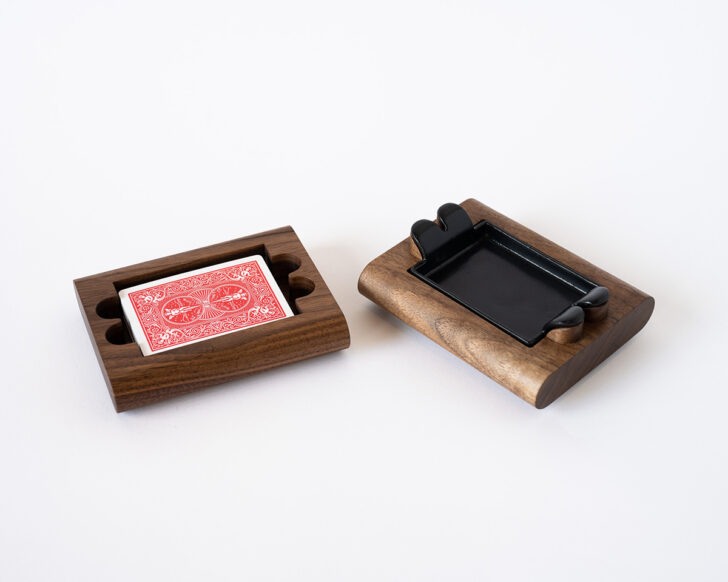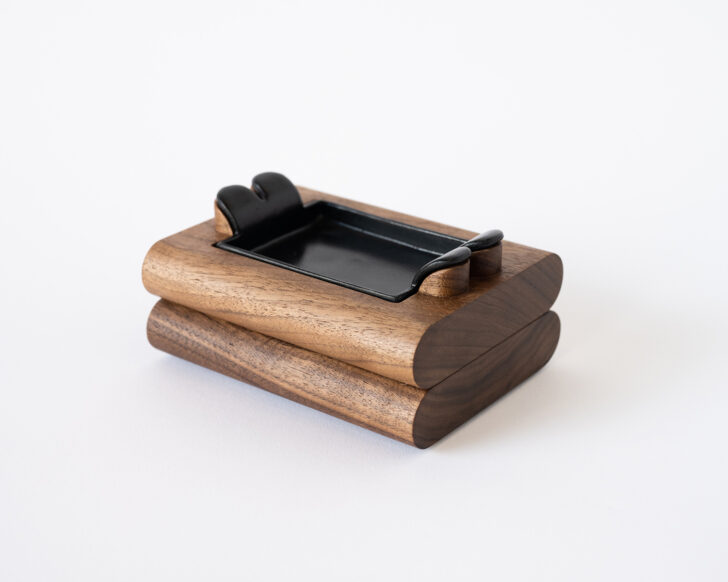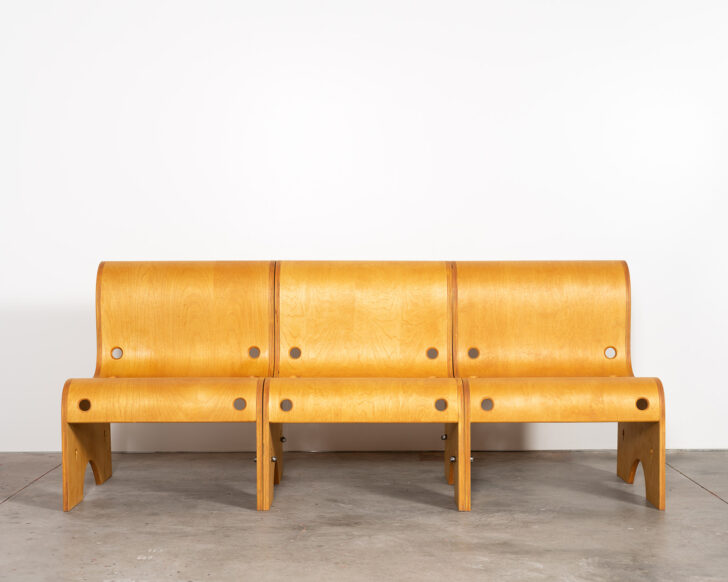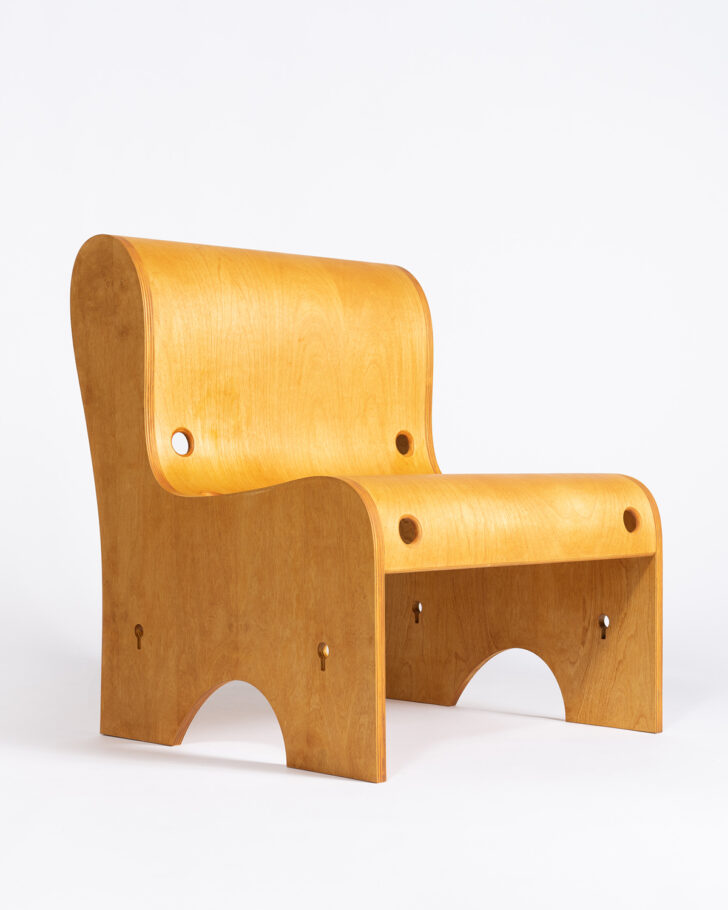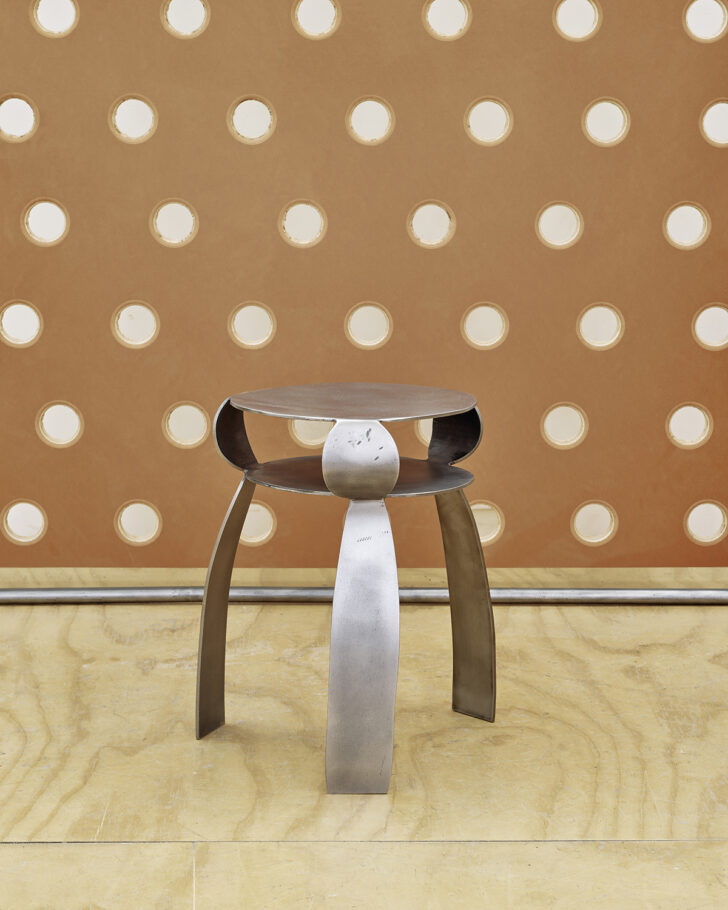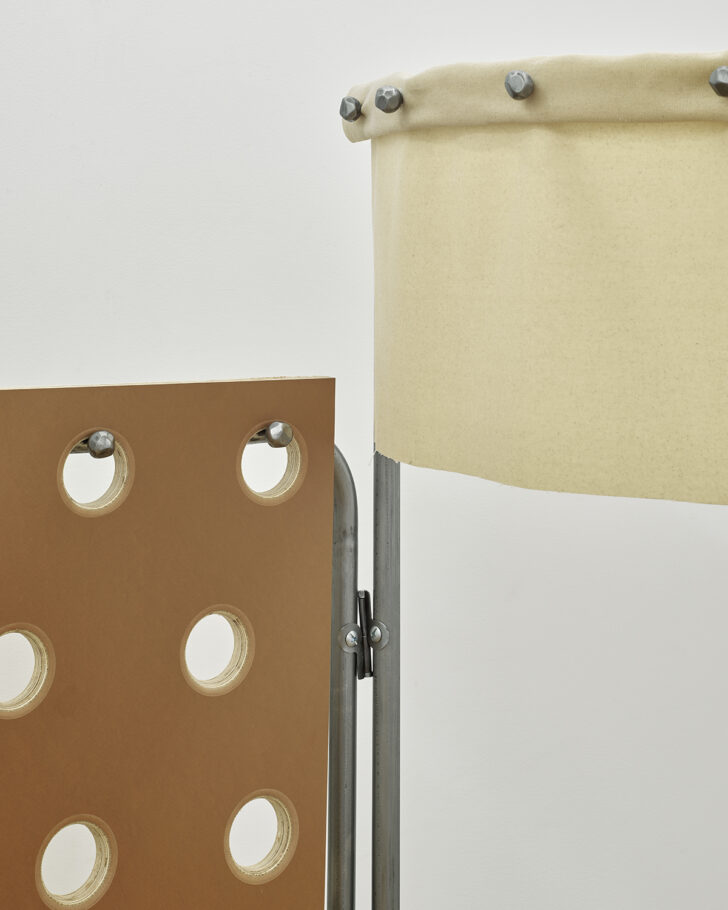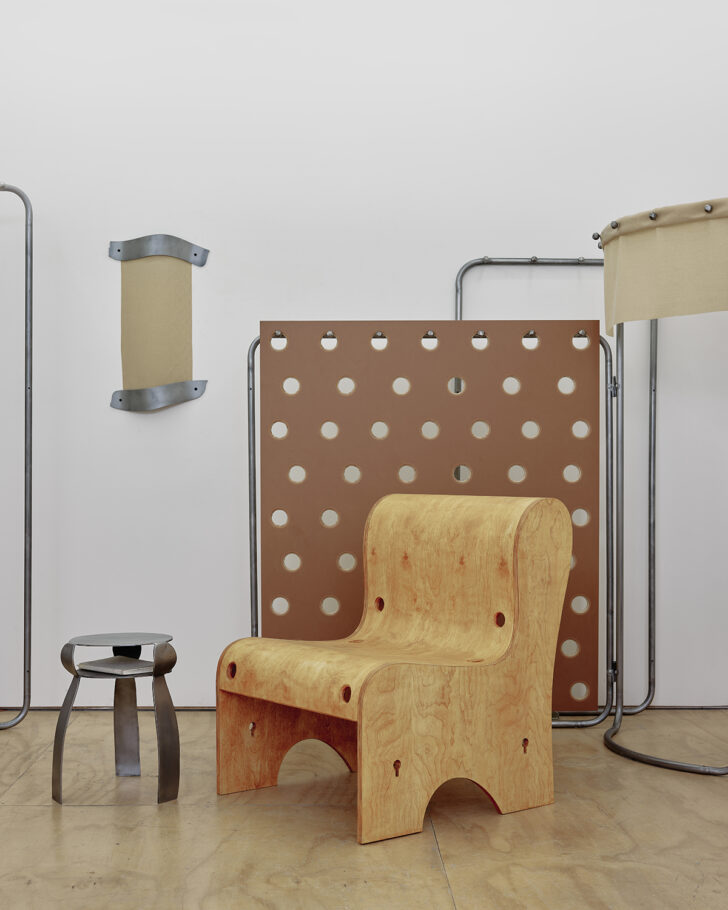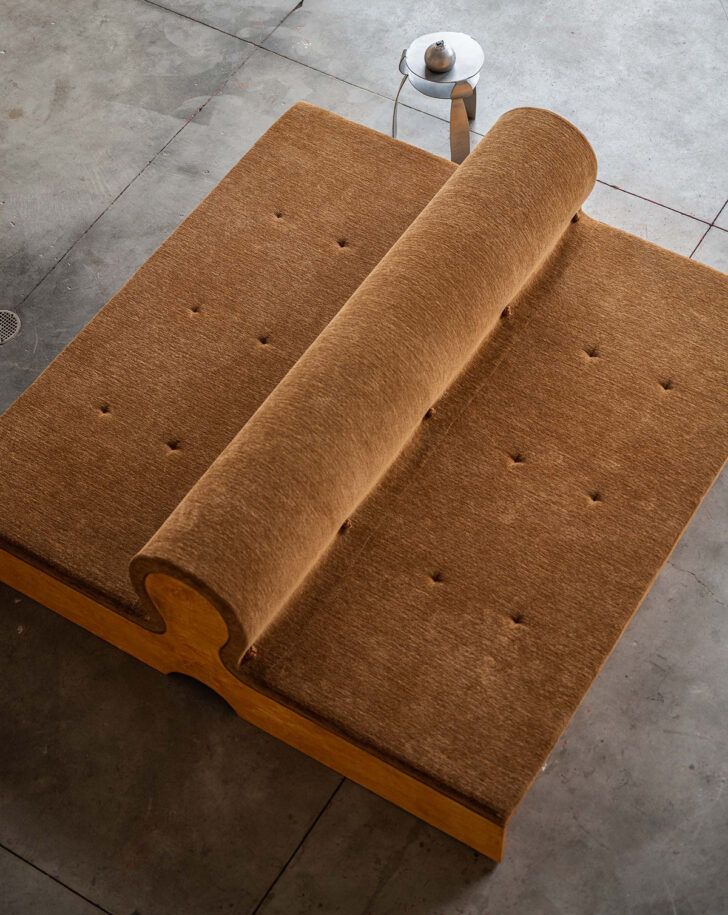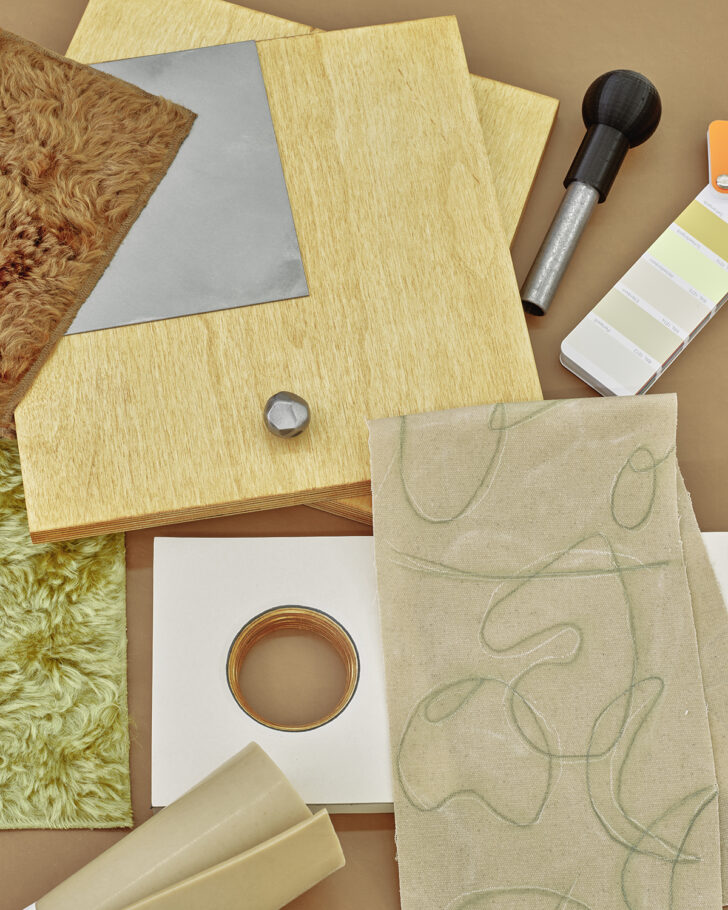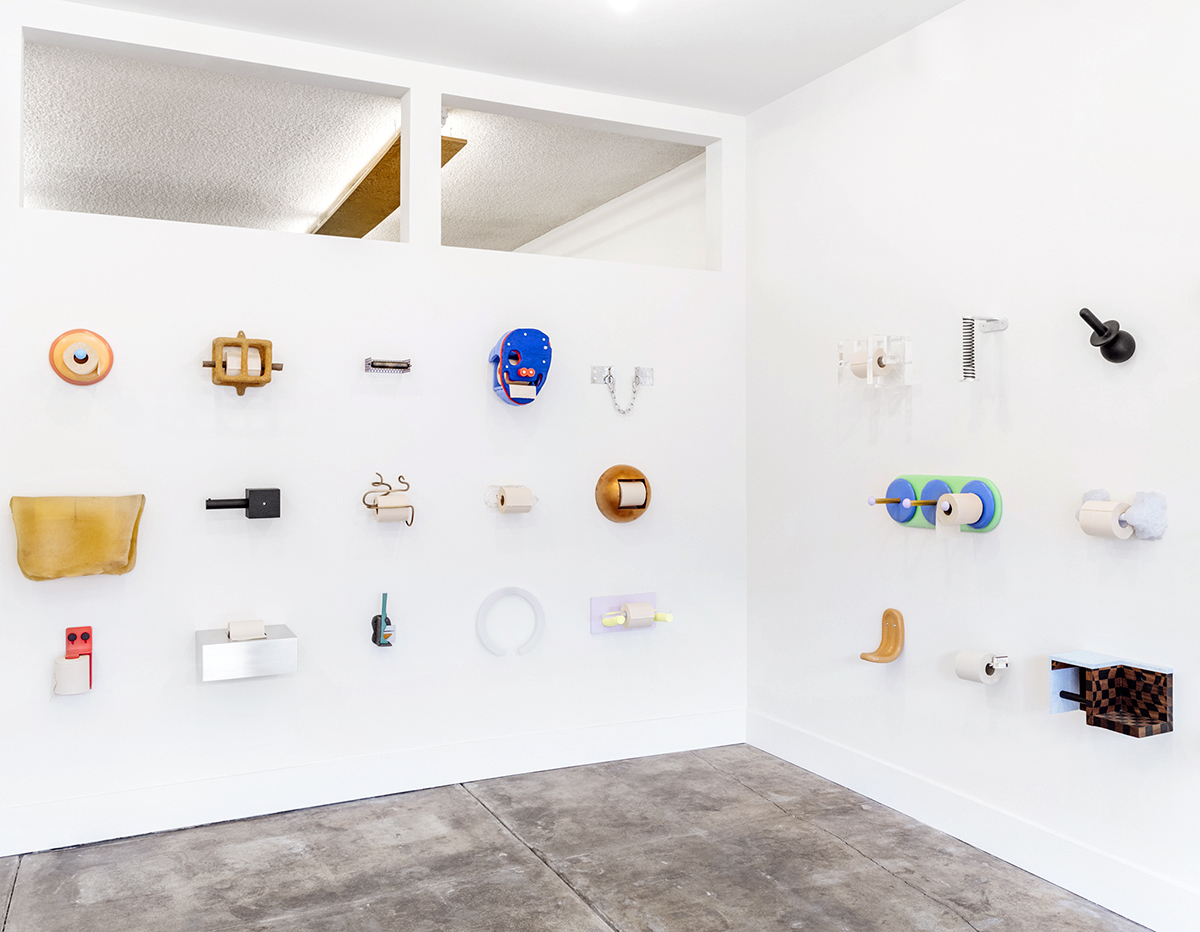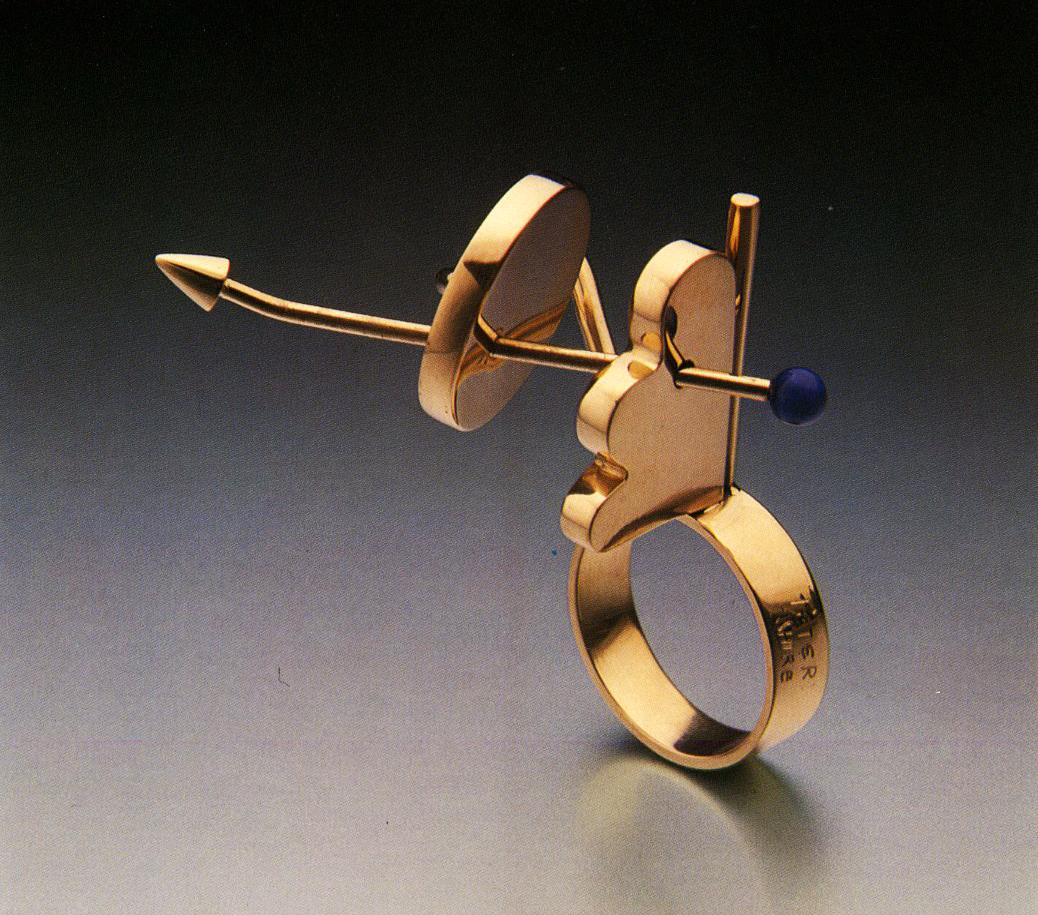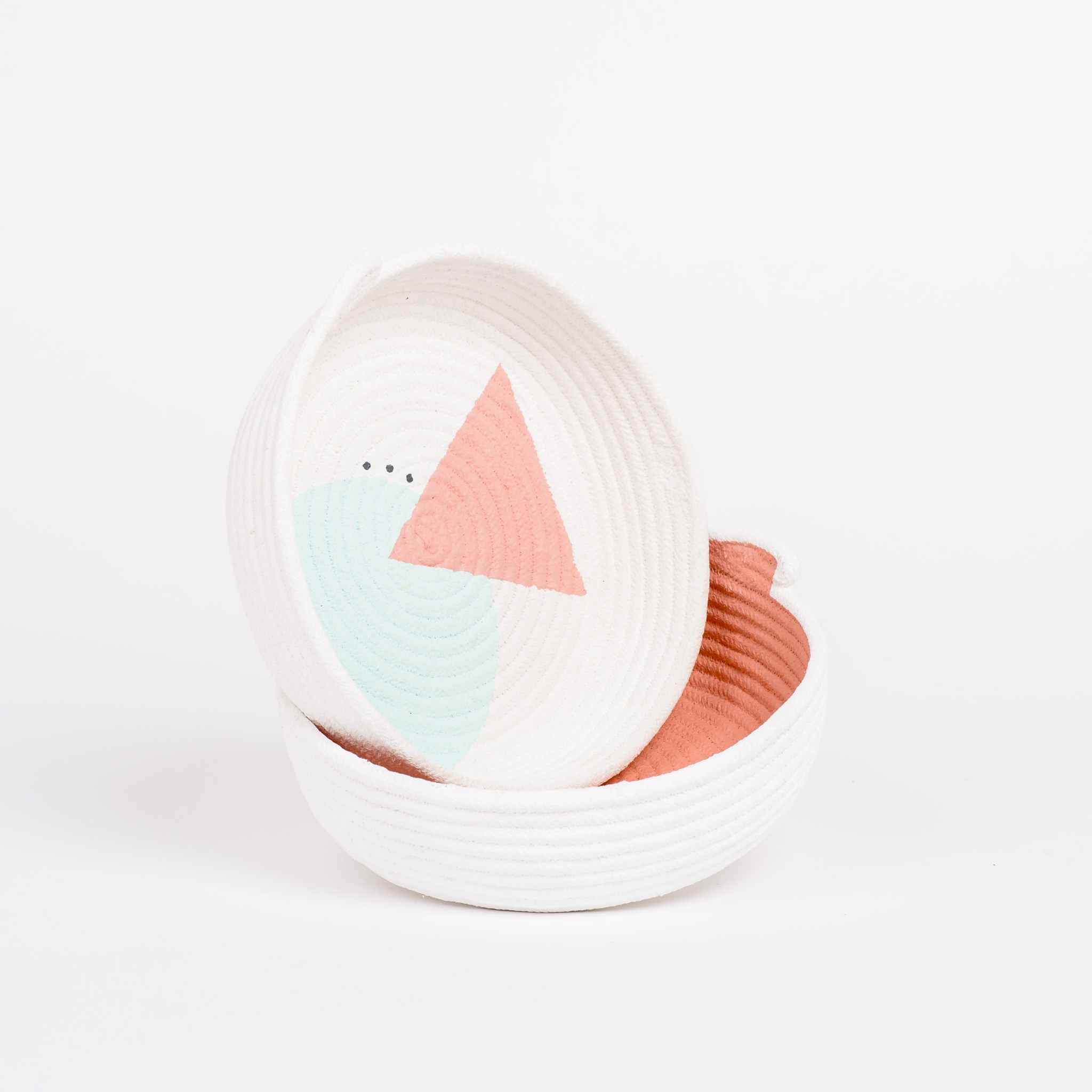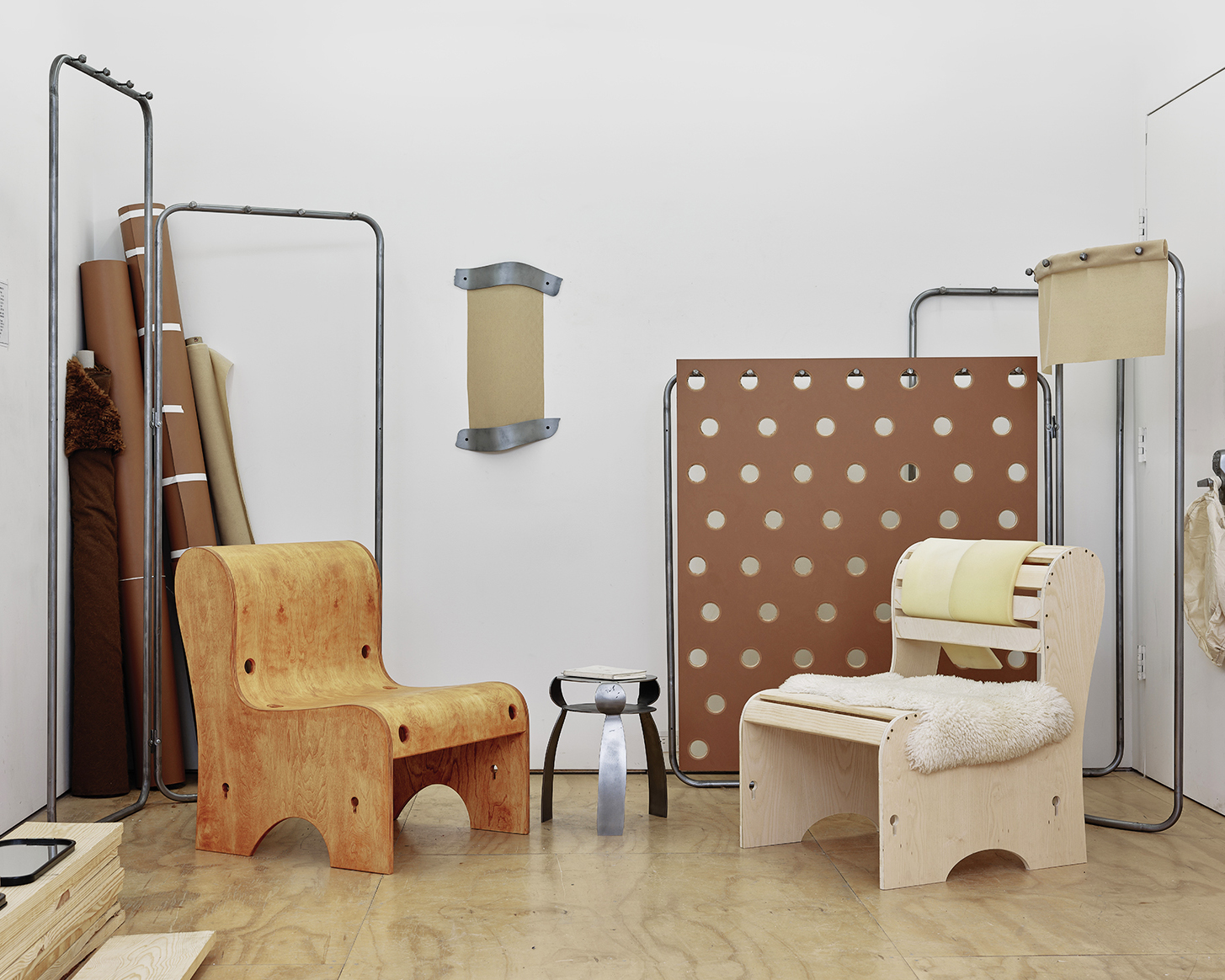
06.05.23
Excerpt: Exhibition
Sarah Burns’s Collection for Marta is Dreamy But Humble — In Other Words, a Little Midwestern
As a designer, New York–based Sarah Burns has a remarkable fluidity when it comes to scale. She can go small and intricate, like the jewelry she creates as co-owner of the Chinatown shop Old Jewelry. But she’s also adept at working with larger, place-defining forms, as with the furniture collection in her first solo show, Prairie’s Edge, now running at Marta in LA through June 10 (with a closing party, complete with Old Jewelry pop-up, this Friday!). What drew her to jewelry is that “it’s a self-contained design, an adornment for the body, and a way to express yourself outwardly to people,” says Burns, who has a background in sculpture and interior design. She thinks of furniture somewhat similarly, as an adornment of space and a reflection of self, but with a more internal bent. “Furniture’s the more intimate space that you show others. I would say my furniture work is my most personal.” That personal element is fully evident in Prairie’s Edge. It’s a deeply thoughtful collection — of seating, lamps, a wall mirror, room dividers, and accessories – but it wears its conceptuality lightly, inviting contemplation without self-seriousness. Not to fall too far back on generalizations, but you might call this quality Midwestern. There’s a modesty, humility, and familiarity matched by an unexpected dreaminess and sense of proportion. Like the massive, tone-setting daybed made of plywood and chenille: “That piece is an example of ‘Let’s go!’ — whoever’s down for something like that is ready to go on a design adventure, I think,” says Burns. But all of it is adventurous, in a way, mapping out a space between reality and memory.
Burns is from “a farm town” in rural Minnesota. Her grandfather and uncle had a tractor shop and both her grandmother and her parents ran a furniture store; her father was also a carpenter and carpet-layer. “Construction and building and modifying, whether that being metal or wood, those kind of examples of creation were always around me,” says Burns. “And with the furniture store, the idea of display was always present. So that’s the lineage.” The pieces in the show are arranged in “room groups,” echoing the arrangement of furniture stores but also evoking a “third space” as Burns explains. “It’s not work, it’s not home, but it’s this other space.” Burns’s grandmother would often go to the Prairie’s Edge casino, from which the show gets its name, and her grandfather had a rec room area above the garage, with a bar and games like shuffleboard (complete with an orange shag rug and dark wood paneling). These in-between spaces allow for different ways of being: they’re social spots but also places to get away. “It’s like this place of solitude but also community. It has the option.”
Within these spaces, there’s a kind of vernacular design and process that turns up in Burns’s work. “If you were to go to someone’s garage space, they’re not paying a designer to design their space. If anything, they make it themselves. My uncle would make weird things to sit on or my dad would make an ad hoc thing. I was surrounded by people that just kind of invented their own world, really.” The approach is intuitive and casual but earnest and precise; a certain level of care is taken. The materials that Burns uses — largely wood and metal, like the birch plywood of the Benchetti seating and the Party Table or the steel in side tables and stools — embody this. “For me, the draw of those materials is that they’re very basic, they’re not refined. I’m using plywood and cold rolled steel — it’s not special, it’s not stainless, it’s not pristine. The finishes are all hand-done finishes, healthy finishes, the steel is all sealed in carnauba wax and the wood is sealed in a zero VOC linseed-based finish. Those are all things that a person can do themselves and also maintain themselves. If something rusts you just buff it, put a little more wax on it and then it’s gone. The idea of maintenance over time is really special to me — you have to care for your works… and that also speaks to the landscape of Minnesota too because things rust and wood rots and things require maintenance. So that was a familiar feeling.”
The materials and colors in Burns’s own work at Marta combine softness and coziness with, as she puts it, a kind of strength and dignity. You can also see it in the interior of Old Jewelry, which she runs with Adam Caillier. “My shop’s got the cool gray tones like the steel, it’s got the warm sunny tones, the yellow, it’s got some wood, it’s just a palette that I’ve been exploring, with little chartreuse-y pops of color. So, for my first collection, to continue exploring that palette was exciting for me.” It’s a chance to pursue her own individual choices and history, which doesn’t always happen when she’s creating commission-based works for friends and clients. “Marta really provided this first opportunity for me to have an unfiltered expression,” she says. “I always knew I had something to say and I just was trying to find the words. I feel like through this show I found them.”
STUDIO PHOTOS AND PORTRAITS BY SEAN DAVIDSON / INSTALL AND WORKS BY ERIK BENJAMINS
